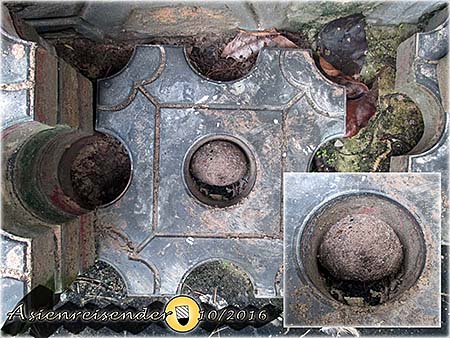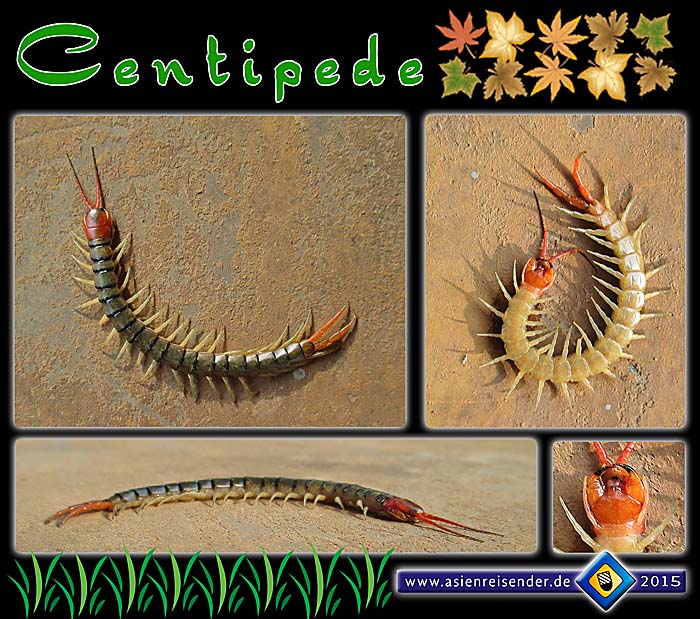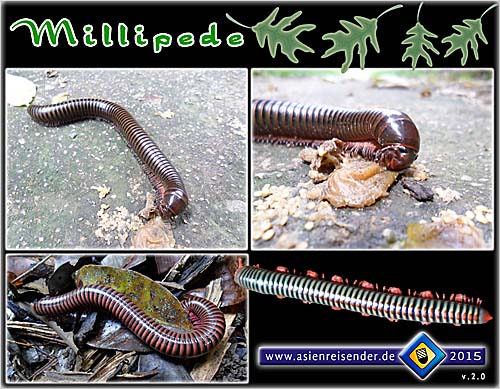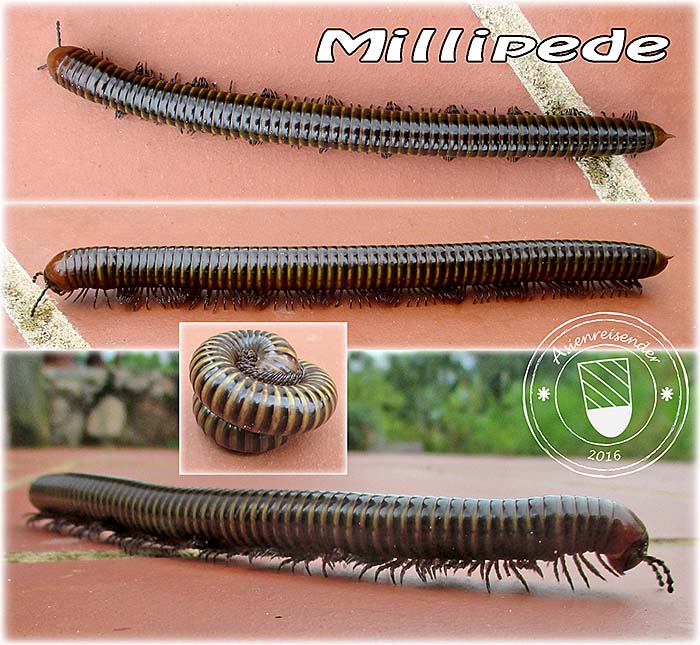1.
Centipedes
Centipedes are invertebrates and appear worldwide in around 3,000 different kinds and cover a wide span of habitats, from the tropical rainforests to deserts, although they need a dump surrounding to live in. In daytime they are usually hidden under stones, thick layers of leaves or other rotting plant materials. At nightime they come out and start hunting for prey.
Centipede in the Rainforest

A centipede in the Malaysian jungle of Pangkor Island. That's their typical milieu - rotten plants on the ground. Image by Asienreisender, 2009
A centipede's size varies between 1cm and 25cm in the tropes (scolopendra are the tropical kinds), although most of them are rather small and don't extend a length of 10cm. Despite their name most centipedes have less than a hundred legs - they vary between 15, 21 and 23 pairs of legs up to 191. They all have an odd number of leg pairs, for they grow in a pattern of four legs (two pairs), while the front pair is then altering into the pair of stings or claws. The centipedes eyes have a lense and are better than those of many other insects who have only facete eyes.
They get often mixed up with millipedes, but are much more seldom. Their physical shape is also differing from the millipedes, who are more compact and equipped with more but shorter and thinner legs. Moreover, centipedes are mostly carnivorous and equipped with a pair of venomous claws or stings. The bulk of their food are earthworms; additionally they eat small insects. The very big centipedes can even eat small rodents and mammals.

Some time after I piled up some of these stones below the window of my study, I found a smaller centipede in the guest bed. Checking the stones outside, there was a nest inside the bottom one. Tiny, white hatchlings crawled inside. The round shell is the skin of a passion fruit. Images and photocomposition by Asienreisender, Kampot, 10/2016
Centipedes can move very quick and are extraordinarily aggressive. They overcome prey with a high speed, catch it with their legs, bite and kill with their poisonous pair of stings. Their poison is strong and contributes to their aggressivity; when disturbed, the centipedes often not withdraw, but attack. They do attack also humans, and a sting of them is, although not lethal, but extremely painful for several days. The poison is a mixture of different, harmful chemicals as hydrocyanic acid, histamin, acetylcholin, serotonin and others. Allergic reactions can happen.
The poisonous stings of scolopendra are flexible and can be moved in all directions. Being touched at the rear the animal can turn round most quickly and attacks directly. They can also errect two thirds of their body length.
When being bitten, the wound swells and the strong pain can affect the whole body. Sometimes paralysing effects appear over days, sickness, dizziness and a deaf feeling around the bite is coming with the sting. Fever might appear. Medical treatment can be necessary, painkillers can bring relief. For a healthy human there is still no live danger to expect; nevertheless, a bite affects the health severely for several days; besides there are two lethal cases documented.
It's possible to have a secondary accident due to a bite, for example when being bitten on a stairway and falling down due to the sudden pain.

These guys are better to avoid. However, they appear far not as often as the harmless millipedes. Besides, they vary often at least in colour. Images and photocomposition by Asienreisender, Kampot, 2015
Centipedes are themselves the natural prey of birds, some lizards like tokay geckos, snakes, some spiders, mice and rats and some other animals. Humans don't like them and usually kill them when possible. I have seen a local man hunting a centipede at Lake Toba; he was very eager to make sure to get the beast killed. Reportedly they have the scary habit to come swiftly out of the dark and rush towards peoples feet.
These insects need a moisture microhabitate, for they loose quickly water. On the other hand they can not swim. Fallen into a bucket of water, a centipede will drown.
The evolutionary track of centipedes leads back 430 million years. They have been among the first animals living on land, after live left the oceans. In fact they look very 'old fashion', in evolutionary terms.
Curiously, some kinds of centipedes are 'matriphagic', means that the offspring is eating it's mother after reaching a certain size.

While the centipede above are all of smaller size (around 5cm), this one is a large, mature one above 20cm long and at least a centimeter in diameter. A cat drove him out of his hideout towards my kitchen door. Image by Asienreisender, Kampot, 6/2015

